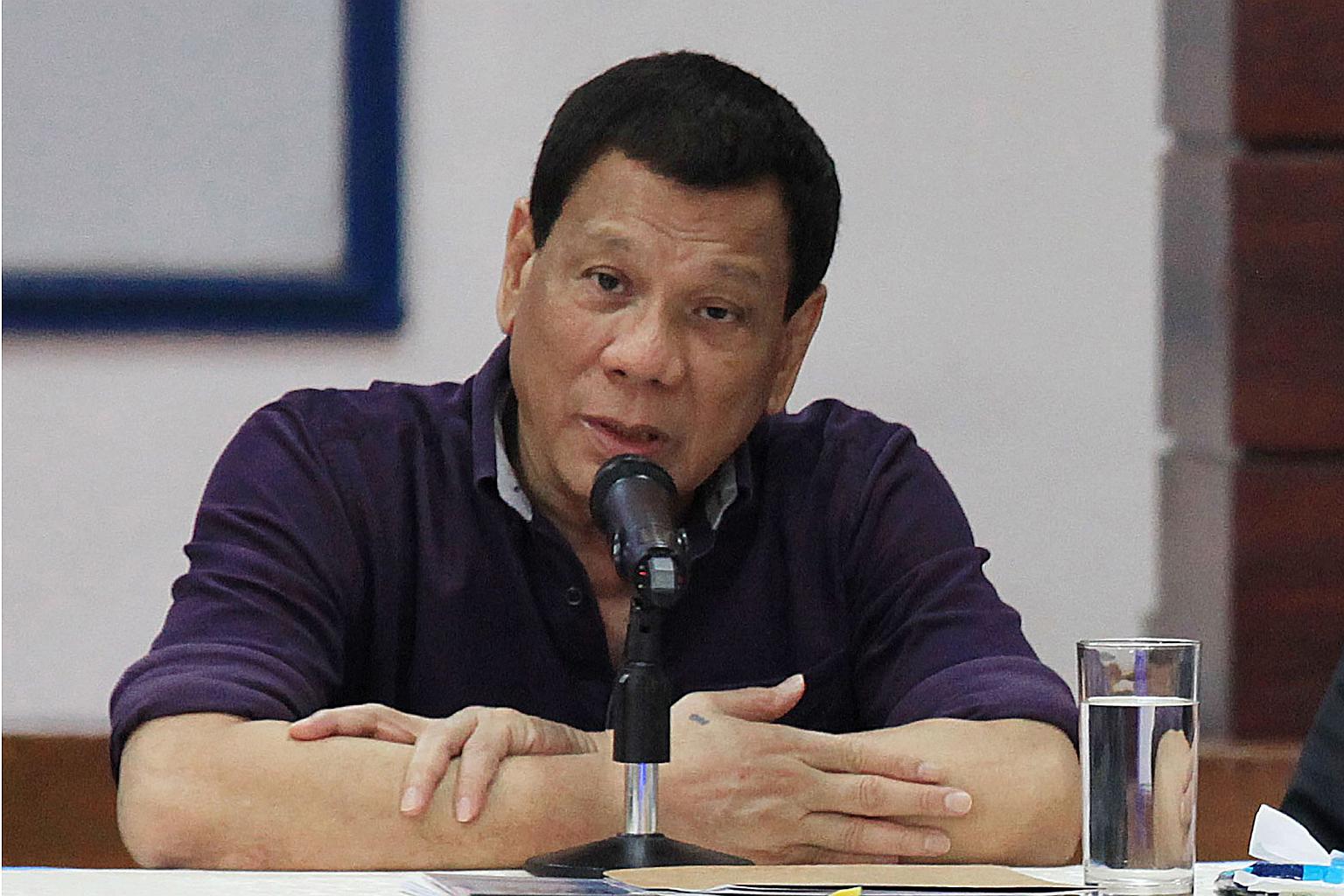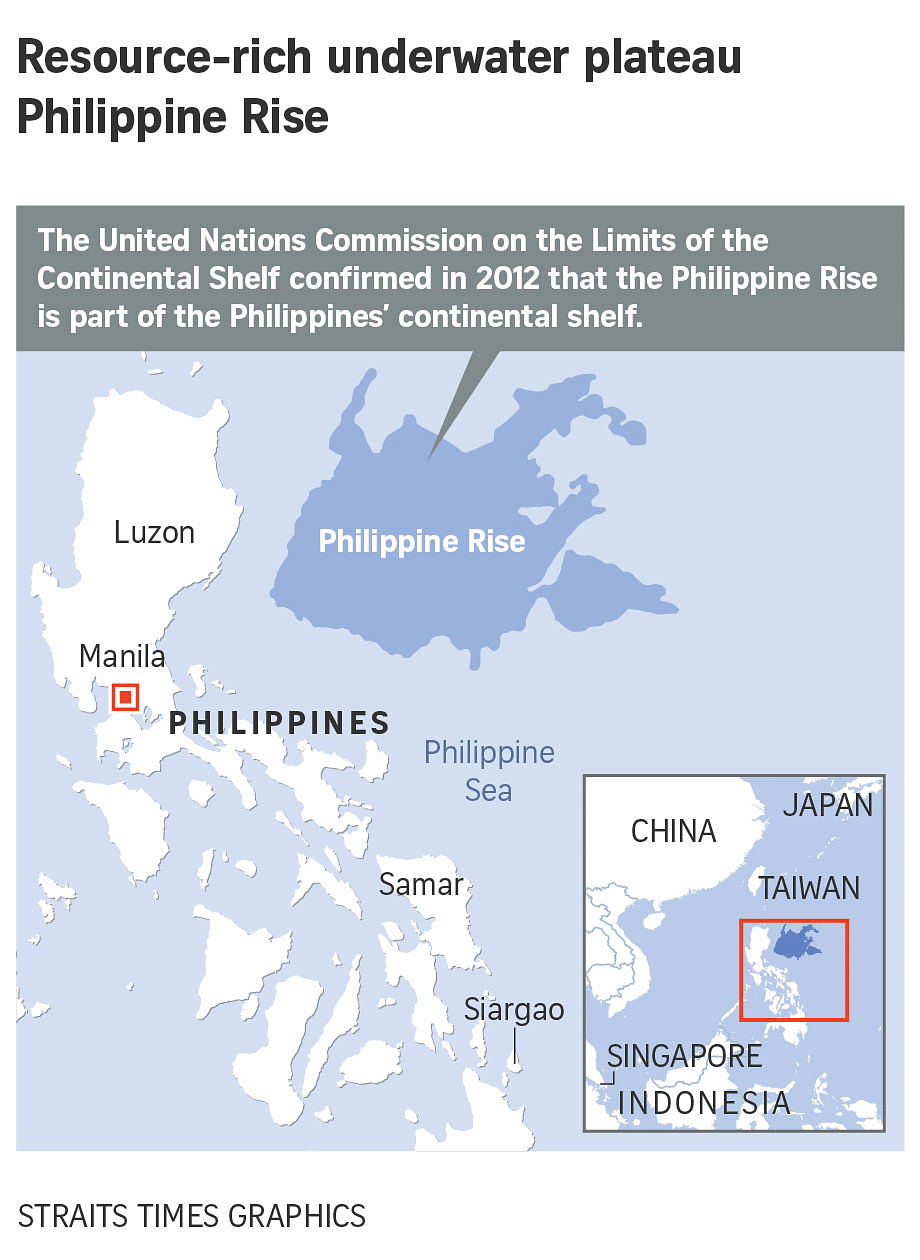Philippine President Duterte orders other nations to leave resource-rich underwater plateau
Sign up now: Get ST's newsletters delivered to your inbox

President Rodrigo Duterte said that the Philippine Rise belongs to his country and that any insinuation that it is open to everybody should end with that declaration.
PHOTO: AFP
Follow topic:
MANILA - President Rodrigo Duterte has demanded that other nations cease all marine research and exploration at a vast, resource-rich underwater plateau east of the main Philippine island of Luzon.
"Let me be clear about this: The Philippine Rise is ours, and any insinuation that it is open to everybody should end with this declaration," Mr Duterte was quoted as saying at a Cabinet meeting on Monday (Feb 5) by Agriculture Secretary Emmanuel Pinol.
The brash, outspoken leader of the Philippines was apparently miffed after "a low-level diplomat of another country" suggested the Philippine Rise did not belong to the Philippines, according to Mr Pinol.
Mr Pinol did not identify the diplomat, but a Chinese foreign ministry spokesman had said last year that Manila could not claim the Philippines Rise as part of its territory.
In his Facebook post on Tuesday (Feb 6), Mr Pinol said Mr Duterte ordered the navy and air force to keep the area clear of foreign research vessels.
"Henceforth, only Filipino scientists will be allowed to explore the Philippine Rise," said Mr Duterte.
"All licences are indeed cancelled," Mr Duterte's spokesman Harry Roque told reporters on Tuesday (Feb 6).

But he clarified that the Philippines does not intend to ban other nations from sailing their ships through the Philippine Rise.
"Navigation can proceed, but henceforth no scientific research and foreign entity can exploit for resources in the area," said Mr Roque.
The United Nations Commission on the Limits of the Continental Shelf confirmed in 2012 that the Philippine Rise is part of the Philippines' continental shelf. Manila, however, has in the past allowed scientists from other nations to conduct maritime research in the area and to help map it.
Mr Roque reported that all research and exploration on the plateau had already been concluded, including a recent project by China.
Formerly known as Benham Rise, after an American civil war admiral who early in his career had a stint in Asia, the underwater plateau is believed to be rich in natural gas and steel-producing resources like manganese.
At 130,000 sq km, it is larger than the main island of Luzon. But it has been largely unexplored. It sits 250km east of Luzon, along the path of at least a dozen storms and typhoons that move across the Philippines each year.
It is also 2,000m to 5,000m deep. These conditions have prompted the Philippines to ask other nations to help it map and survey the area.
Foreign Secretary Alan Cayetano earlier said the Philippines, since 2000, has approved each one of 13 requests from the United States, nine from Japan and four from South Korea to conduct maritime research there.
China filed 18 requests, but only two were approved, he added.
Beijing deployed its most sophisticated research ship - the US87 million, 4,711-tonne Kexue - to the Philippine Rise.
Analysts have suggested that China's forays into the Philippine Rise could be part of a larger effort to create a second "fence" east of the South China Sea to further challenge United States dominance in the Pacific.
The underwater plateau sits near US military bases in Guam and Hawaii, and there have been concerns China could be testing water depths for submarine routes from the South China Sea to the Pacific.

